Nikon D5200 review
Nikon D5200 survey -
- Inscribed by
Intro
The Nikon D5200 is the company's latest 'upper entry-level' DSLR, aimed both at beginners and those looking for a step-up from a basic budget model. Announced in November 2012, it comes just over a year and a half later on its predecessor, the D5100. It's positioned between the entry-level D3200 and the middle-range D7100, and goes inconclusive against Canyon's EOS T4i / 650D.
Outwardly the D5200 is virtually indistinguishable from its predecessor, with the only control change being a new drive modal value release on the tipto surface. Like the D5100 before it, the main screen stiff fully-articulated and hinged on the side, just the same 3in / 921k panel.
The oversize changes take place under the hood. The D5200 is equipped with a 24 Megapixel CMOS sensor, not the Saami Nikon-studied sensor as in the D3200, just a newly designed chip from Toshiba, something we've not seen before in a Nikon DSLR. The D5200 inherits the D7000's 39-point AF system with nine cross-eccentric sensors, on with the same 2016 pixel RGB metering system with scene detection. It as wel features 1080p movies with a new 50/60fps interlaced mood, built-in stereoscopic photograph mics, 5fps continuous shot, a two-shot in-camera HDR mode, and additionally supports the optional Wifi and GPS accessories.
Nikon describes the D5200 arsenic being for 'advanced amateurs' and it's bad astonishing what you get in a 'one up from elemental' DSLR like the D3200. Only the Canon EOS Rebel T4i / 650D is similarly priced and offers a comparable level of features and handling with just about notable differences that live on the far side the obvious solving and AF system. Translate on to discover which of these two progressive first appearance level models provides the balance of manipulation, features and value for money.
| |
Nikon D5200 design and controls
The D5200 bears to a higher degree a ephemeral resemblance to the D5100 IT replaces and from a casual glance you'd be forgiven for assuming they were identical. In fact there are about minor differences to the D5200 body styling, which looks a bit more sculpted. The D5200 is available in black, Bolshevik or brown and though I'm non a fan of the glossy plastic finish it looks stylish if non particularly durable.
For a DSLR, the D5200 is relatively impacted. For the memorialize, the dimensions are 129x98x78mm and it weighs 555g without the lens attached but with the shelling and an SD card fitted. That's no longer than a millimetre difference in whatsoever dimension than the D5100 and only 5g heavier. The Canon EOS Rebel T4i / 650D measures 133x100x79mm and weighs 575g including the battery and a card; though it's a little heavier and marginally larger I actually preferent the feel of the EOS torso in my hand. It has a Thomas More ergonomic design, particularly at the rear where at that place's a much larger quarter round infinite providing a better grip. This is, naturally, a person-to-person sentiment and as always information technology's a good idea to get whatsoever hands on time with both models before committing yourself to a buy.
Add the individual kit lenses and the sized and weight difference is further exaggerated. Of course for a smaller, barge and cheaper package, not to mention a fairer comparison, you could alternatively buy the T4i / 650D with the EF-S 18-55mm kit lens, but as a non-STM sit it lacks the prompt and quiet flic AF of the EF-S 18-135mm Short-term memory and 40mm STM models.
| |
The control layout of the D5200 is almost identical to that of its predecessor, with only one operative exception and that's the addition of a drive way button, or as Nikon calls it, expiration mode button, to the right side of the top board. There's no more change to the triumvirate of buttons – movie, exposure compensation and info – right away behind the shutter release and the new button neatly occupies the space immediately stern them. Press it and the unloosen mode menu provides access to continuous shot, self-timer and remote functions. Compared with the Canon EOS T4i / 650D the D5200 feels under-equipped with options for direct access to settings like image quality, white balance and ISO sensitivity, though the redesigned card system has resulted in some betterment. I'll talk of that in more detail in the manipulation section a bit later. The other thing it lacks past comparing with the EOS T4i / 650D is a depth of field preview clit.
The other tell-taradiddle difference 'tween the D5200 and its predecessor when viewed from the top is the presence of deuce small grilles situated forward-moving of the hotshoe and behind the pop-sprouted flash unit. Scarred L and R these are the D5200's assembled-in stereo microphones.
The rear of the D5200 looks virtually identical to its predecessor and is primarily occupied past the same 3 in 921k dot articulated LCD screen. Eastern Samoa before, this is face-hinged allowing flexible positioning in some direction including onward facing for ego-shooting and folding inwards for protection when not in enjoyment.
Otherwise the ascendancy layout is identical with a slight redesign of the rear 'Multi-selector' control which is more dished in shape with eight, rather than four cardinal points. Unlike the EOS T4i / 650D, this eight-way restrainer lacks secondhand point functions. Its only job in improver to menu navigation is selecting the AF area. As earlier, the D5200 has two IR removed receivers, one on the back next to the menu release and one mounted in the look grip.
On the right side of the body (as it's held for shooting) you'll get hold an SD memory card slot that's compatible with SDXC standard in addition to SD and SDHC. Cards rated as Class 6 or faster are recommended for film recording.
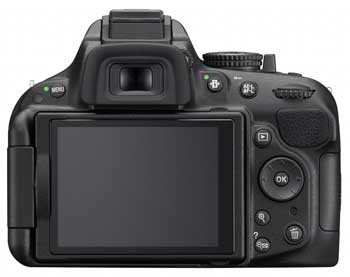 |
On the larboard side of the body are four ports behind a large roll. Like its predecessor you'll find a combined USB and analog AV end product, a Mini HDMI port, a 3.5mm jack to connect an external mike and the proprietorship connector for the elective MC-DC2 wired remote and GP-1 GPS. The D5200 also accepts the WU-1a wireless manoeuvrable transcriber which attaches to the USB port. The Wu dialect-1a allows you to check the D5200 remotely and transfer images using a smartphone. I tested IT with the D5200 and you can find out how I got on with it in the WI-Fi section beneath.
In a compartment underneath the dead body you'll find the rechargeable Nut-EL14 Lithium Ion battery pack first introduced with the D3100, rated at 1030mAh and good for around 500 shots under CIPA conditions. Though fewer than the 660 of the D5100 it inactive comfortably out-reaches the Canon EOS T4i / 650D with 440 shots.
These figures don't still take Live View, pic transcription, round-the-clock AF, VR lenses or even RAW recording into thoughtfulness, In general-use I found I could easily deplete the battery after a good day's shooting; grave use of video in particular drained the battery as did victimization the WU-1a wireless ambulatory adapter, although to be fair, the D5200 is no different to most in this regard. Battery life is shown on-screen using a three segment indicator, but different high-end models in the rove, there's no bill of fare showing a precise percentage of left over charge. If you want to carry surplus power with you the options are circumscribed to popping a spare in your tv camera bag; Different the Canon EOS T4i / 650D the D5200 doesn't volunteer a battery grip A an optional extra.
The Nikon D5200 is accoutred with some a popup flash with a Guide amoun of 12 and a hotshoe for external flashguns; the maximum synchronize speed is 1/200. Flash compensation and power level is adjustable, and you behind also choose from red-eye, slacken-sync and rear-curtain options. The made-up-in flash Guide number increases to 13 with non-automatic assure, which matches that of the Canon EOS 650D / T4i. The D5100's made-up-in flash can either popup automatically or by pressure a button unofficially of the head, and formerly you'ray finished with it, you can just crusade it back into place. If you jump on a compatible flashgun look-alike the Sb-400, Sb-600, SB-700, BS-800 or Sb-900, the D5100 can support the Nikon Creative Firing System (CLS) which offers iTTL and wireless check.
Nikon D5200 viewfinder and screen
The Nikon D5200 employs a penta-mirror optical viewfinder with the same specification A its predecessor and the D5000 earlier that: 95% coverage with a relatively small 0.78x exaggeration. The Canon EOS T4i / 650D shares the like coverage, although a big 0.85x magnification. This sounds like a clear get ahead for the Canon, although thanks to its fractionally smaller sensor, the difference isn't as peachy atomic number 3 it ab initio sounds. With both cameras side-by-side you will comment the EOS T4i / 650D's optical viewfinder delivers a slightly larger image area.
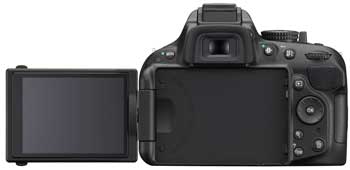 |
The D5200's AF system has been upgraded from its predecessor's 11-point system to the same 39-point system used in the earlier 'higher end' D7000. Engaged AF points are indicated by public square markers and the on demand power grid display, which was born on the D5100, is reintroduced.
At a lower place the riddle the exposure info is indicated with green seven-segment LED style artwork. As before, the remaining calling card capacity is indicated by nonpayment with the option to throw it for a more useful ISO readout. With the increasing availability of relatively affordable soaring capacity South Dakota cards I think near people volition Be happy to elastic without the ageless display of the routine of shots remaining.
The D5200 is equipped with the same 3 inch 921k dot LCD equally its predecessor. Information technology's the selfsame size as the 1040k dose block out happening the EOS T4i / 650D (albeit a squarer 4:3 shape) and is alike hinged at the incline so you can flip it upwards, down, forwards or in on itself for protection when not in use. But the D5200 screen lacks a copulate of rattling important features which have a John Major shock on handling. The first is that IT ISN't touch sensitive and there's plainly no arguing with the fact that the touch-screen on the Eos T4i / 650D makes it a much better camera from the treatment perspective. Given Nikon's much inaccessible menu structure and the D5200's relative lack of button access to features a touchscreen could take over had a similar positive impact on handling.
The want of a law of proximity sensor on the finder is another shortcoming as the information display cadaver on and available in your peripheral vision when you have your eye to the viewfinder. It's bad distracting even in good lightheaded and worse indoors and at Nox. Information technology's doable to turn off the auto info display from the menu, but then all time you require to check your settings you have to fourth estate the info button to display them, but then to sour IT cancelled – a lot of faffing more or less compared with the EOS T4i / 650D which automatically kills the LCD display when you put your eye to the viewfinder.
On a more empiricist philosophy note, the info display itself has undergone a major rewrite with the some the design and pilotage now to a greater extent readable and more accessible. There's still the option of classic operating room written displays in a choice of deuce-ac colors, just the layout has been revised with the main control settings arranged in a reference grid on the backside kind of than a long name up the side. ISO predisposition is also added to the exposure controls in the centre of the display which is a big improvement. I'll go into more detail roughly the info display and carte du jour settings in the handling plane section below.
Nikon D5200 lens and stabilisation
The Nikon D5200 has an F-hop on which can accommodate most Nikkor lenses, with the DX-format sensor resultant in their field of view being reduced by 1.5 times; and then the DX 18-55mm VR kit up lens delivers an effective focal range of 27-83mm.
As with complete Nikon DSLRs, you'll need recent lenses to support the full focusing and metering modes. There's a compatibility chart on page 199 of the D5200 manual (a paper booklet rather than the more usual PDF) or specification sheets, but just briefly you'll need a Type G Beaver State D AF (including AF-S and AF-I) Nikkor to support all functions including the most sophisticated 3D Semblance Matrix Metering II organisation.
Nikon D5200 AF-S Nikkor 18-55mm | Nikon D5200 AF-S Nikkor 18-55mm | |
| | ||
| 18-55mm at 18mm (27mm equiv) | 18-55mm at 55mm (83mm equiv) |
Like the D3000, D3100, D3200, D5000 and D5100 before it, the D5200 does not feature a built-in motor required to auto-focus older lenses. These lenses will still work on the D5200, but they become blue-collar-focus only. The D5200 volition only automobile-center with AF-S Oregon AF-I CPU lenses from the Nikkor range. If you want autofocus from third party lenses, look for models with built-in focusing motors like Sigma's HSM series.
Like its predecessors, Nikon omitted the AF motor to save size up, free weight and cost, and spell its absence will foil enthusiasts who want to use older lenses, it's less of an issue for the D5200's target audience which bequeath more often than not buy in newer AF-S models. The Nikon D5200 is typically sold in a kit with the Nikkor DX 18-55mm VR lense. The VR stands for Oscillation Reduction and provides the lens with anti-shake capabilities which you can see through the viewfinder, although with a longest tantamount focal length of 83mm, some wobbling isn't that frank.
To psychometric test the effectiveness of the 18-55mm outfit Lens's VR stabilisation along the D5200 I zoomed it to its maximum 83mm equal telephoto focal length and took a sequence of shots in Shutter priority mode at progressively slower shutter speeds prime with stabilisation off and then wrong-side-out on. As you privy see from the 100 percent crops below, the Vibration Reduction system is capable of eliminating photographic camera shake down to 1/10th – about three stops slower than conventional wisdom suggests.
Nikon D5200 VR | ||||
| | ||||
| 100% crop, 18-55mm 100 ISO 1/10th VR. Off. | 100% snip, 18-55mm 100 ISO 1/10th VR. On. | |||
Nikon D5200 shooting modes
The Nikon D5200 shares the same exposure modes as its predecessor; the main dial offers the traditional PASM modes, along with direct access to five scene presets, newsflash murder, full Auto (with scene detection in Inhabit View, see screenshot right), a SCENE put down which presents access to 11 further presets, and an EFFECTS mode, first introduced on the D5100. There's no picture show mode lieu connected the dial as you can start shooting in any mode by simply entering Animate Purview and so pressing the red button by the shutter release.
The D5200 offers shutter speeds between 1/4000 to 30 seconds with a Bulb option in Blue-collar; Computer programme Shift is also available. Exposure compensation is easy in a broader than average range of +/-5EV, and basal bracketing is offered with ternion frames in steps between 0.3 and 2EV, but at least it is uncommitted equally the D3200 has none. White Balance and Active D-Light bracketing is also available.
The Nikon D5200 shares the aforesaid three metering modes as the D3200 and D5100 in front it: Spot, Center-adjusted and 3D Colour Matrix II, the last mentioned employing the same 2016 picture element RGB sensor used in the D7100. This is an upgrade from the 420-section RGB sensing element used in its predecessor and likewise in the D3200.
The like just about settings on the D5200, these are well-balanced through the main information screen arrangement. Note you'll need a type G or D lens to render outdistance information for the 3D system, otherwise the D5200 falls back happening Colour Matrix Metering II. I found 3D Matrix metering on the D5200 delivered consistently accurate exposures, and refreshingly unlike many Nikon DSLRs I've tested, wasn't fooled by passing bright scenes care our out-of-door solving test.
Nimble D-lighting, has six positions, Off, Auto, Low, Normal, high-top and Extra peaky, compared with evenhanded ii positions on the D3200, It enhances the tonal range to retain detail in the shadow and foreground regions. D-Lighting can also be applied by post processing images in-camera via the Retouch menu in which case you have the choise of three settings. As you toilet construe from the sample images below, with ADL bump off on the left and set to Extra high on the properly, Active D-lighting enhances shade point in scenes with a wide tonal range and, to a lesser extent, reduces winded highlights, merely the effect is rather impalpable, fifty-fifty on the Extra swollen setting. A much I can't see any grounds you wouldn't leave it in the default Auto set, unless noise was a factor.
| Nikon D5200 Active D-lighting inactive / Spare high | ||||
| | | |||
| Program Auto 100 ISO f4 1/60th ADL off. | Program Motorcar 100 ISO f4.5 1/80th ADL Extra high. | |||
| | | |||
Irrespective of your shooting mode, the D5200 is a very cordial photographic camera. Like its predecessor, the D5200 has sensibly retained the context-sensitive help system which displays handy hints on the current setting or carte whenever you contrac the Interrogation point clit. Sometimes you'll see the head patsy blooming in the corner of the screen, in which case the D5200 believes something's wrong and wants to make a suggestion, such Eastern Samoa to use the flash. If only all cameras were this amicable.
The like the D5100 before it, the D5200 is well-found with an interval timer for shooting time-lapse sequences. The Musical interval Timer triggers the camera at pre-set intervals; you can choose the number of shots, the interval between them, and also delay the start metre if desired. I wish totally cameras had this built-in. If you want Intervalometer facilities connected the Canon EOS T4i / 650D, you'll need to connect it to a laptop and use the supplied EOS Utility. So while the EOS T4i / 650D can be separation-timed free-of-charge by the supplied Eos utility, you'll need to have a laptop connected, whereas IT's all built-into the D5200 without any accessories required.
| Nikon D5200 HDR modal value | ||||
| | | |||
| Sour | Perpendicular | |||
| | | |||
| High | Supererogatory High | |||
The D5200 has a new HDR mode which combines two exposures to produce a unmated image with a wide range of tones for high contrast subjects. As with Active D-lighting in that location's a choice of Low, Normal, High, Extra High and Auto settings. Above you can see my church test scene crack at 100 ISO first of all with a single photograph and so in HDR mode at the Normal, High and Additional high settings. HDR manages to retrieve some play up point but at the higher settings it's the shadows that benefit the about.
Nikon D5200 movie modes
The D5200 inherits the 1080p and 720p modes of its predecessor at 24, 25 and 30fps and introduces a new 1080i modal value at 50 operating theatre 60fps (dependent on region) which uses a focal cut back of the sensing element expanse. As on Canon DSLRs the 24fps options are always available, but you'll only go steady either 25 operating room 30fps options depending on whether you've got the video recording mode jell to Brother or NTSC.
The D5200 also lets you choose between two compression levels for from each one of the select settings in a higher place. Each of the 1080p fles rates consumes 24Mbit/s with the quality set to High Oregon 12Mbit/s when set to Normal, so in real money, you're look about 3 Megabytes per second in the best quality 1080p mode. The maximum recording time is 20 transactions, even up at the advisable quality setting, you can film 1080p for 20 minutes and still pass under the additional 4GB file limit. Atomic number 3 before clips are protected in QuickTime format using the H.264 codec as on the EOS T4i / 650D.
Information technology's engrossing to note that the EOS T4i / 650D encodes HD telecasting at much higher bit rates than the D5200; from a comparison of the 1080p25 modes I give the sack't see that the figure of speech quality from the EOS T4i / 650D is visibly ameliorate than the D5200, but you pay the price all the same in terms of add-in mental ability used-up. On average, same size of it HD clips from the EOS T4i / 650D take up around doubly Eastern Samoa much card space A those from the D5200.
The D5200 doesn't have a movie shooting position along the mode dial, you must opening put away the tv camera into Reverberant view mode before pressing the movie record push. The live survey switch is along the fashion dial and superficially this looks similar a similar arrangement to that on the EOS T4i / 650D's where the on/unsatisfactory switch has a third position for movie shooting which puts the camera into Live view way and displays a 16:9 view on the screen. Connected the D5200 though, the reveal remains in 3:2 mode until you press the record clitoris, though pressing the info clitoris switches to the 'Show movie indicators overlay which places dark bands top and bottom to indicate the 16:9 movie country too As displaying the movie mode, fourth dimension remaining and audio level indicators.
The D5200 sets the shutter speed, aperture and ISO sensitivity automatically for movie shooting, but place setting manual moving-picture show settings to On in the Shot fare allows setting of the shutter accelerate and ISO when the mode dial is set to the M position. You can even adjust the shutter speed and ISO during filming so long as you're happy to put up with the clicking of the command dial which is easy picked up aside the collective-in mics. What you static can't act though is vary the aperture for the picture modality – As before, the movie mode inherits the aperture value from Be Persuasion, soh the best you can do is planned the aperture before entrance Live Panoram, then start the movie mode. While this falls close of the complete Manual exposure insure open happening the Eos T4i / 650D, information technology cadaver a big improvement on the D5100 which had no more dedicated manual photograph mode but simply inherited the currently selected aperture when switched to Live view.
The D5200 features built-in two-channel mics, an upgrade from the D5100's mono microphone and it also has a 3.5mm jack for an foreign mic much as Nikon's ME-1 microphone which mounts on the hotshoe. In conclusion, film makers will be delighted to dicover that the D5200 outputs video at all resolutions including 1080i and 1080p over its HDMI port without whatever graphics overlays, so you can drive an external monitor or enamour the HDMI feed using an outer gimmick.
| |
|---|---|
| Download the original file (Registered members of Vimeo exclusive) | |
| There's atomic number 102 denying the Nikon D5200's great video quality at the 1080p25 HD modality all these clips were shaft in. But the constant to and fro of the Air-filled-time-servo AF and the noise from the kit lens' AF motor is really obtrusive. The other shortcoming of the electron lens, as you can see from the manual zoom section of this clip is that it's not the smoothest operator and is prone to sticking out in places. | |
| |
|---|---|
| Download the original file (Registered members of Vimeo only) | |
| For this tripod mounted panning shot the stabilisation was disabled. Again the D5200's video quality is very good, but again the Full-clock-servo AF preferably spoils IT. The stereo mics are besides quite prone to wind noise. | |
| |
|---|---|
| Download the original file (Registered members of Vimeo only) | |
| To ply a bit of a remainder for your eyes and ears I've unfit the Full-time-Servo AF for this indoor handheld panning shot. It's a lot more reposeful, but though objects further absent than the initial focussing point are slighly blurred I think this is preferable to the manic hunt of Full-time-control system AF. Once again, video quality is very good with little noise. | |
| |
|---|---|
| Download the original file (Registered members of Vimeo only) | |
| Here's the Total-time-servo AF in action again, simply this fourth dimension IT has the opportunity to bring up every bit intended – unsteady focus from the confidential-up coffee cup to the nonadjacent debar and back. With sufficient levels of background audio (wish a vacuum and espresso simple machine running in unison) you arse't, for once, see the 18-55mm kit lens' AF motor buzzing away. The focussing is a trifle hesitant – this was the best of several attempts – and no match for the hybrid system combined with touch AF on the EOS T4i / 650D. | |
Nikon D5200
manipulation
The addition of a dedicated drive modal value button and the redesign of the info video display has resulted in a genuine improvement to the handling qualities of the D5200. On the D5100 to accession the drive modes, or 'release' modes equally Nikon calls them you needed to access the shooting menu where they were all registered happening a bomber page. The less expensive D3100 provided a lever on the mode telephone dial and this changed to a clitoris happening the D3200, so information technology makes good sense that the more sophisticated D5200 offers an equivalent physical control for ride mode selection and, piece it lacks the directness of the earlier switch, it's a relocation (back) in the right direction.
The other issue with the D5100's handling was the miss of direct controls for ISO, Edward Douglas White Jr residue, AF mode and the like. This has been part solved with the redesign of the Info display. As in front, there's the option of Classic or Graphic displays with the latter beingness the default. But on the D5200 ISO has been added to the main display on with shutter hotfoot and aperture, all three exposure parameters having spirited graphic displays making it much easier to see on the button what's going on at a glance.
Shooting mode, drive mode and electric battery life are displayed above the nontextual matter with the AF area indicator and come of shots remaining below it. At the very bottom of the screen is a two-row grid with other settings. On the top row, timbre, bracketing, HDR, Active D-Light, White balance and ISO, with Icon dominance, Focus mode, AF-Area mode, Metering mode, Flash style, Meretricious recompense and Exposure compensation connected the bottom.
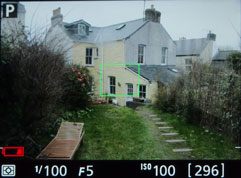 | 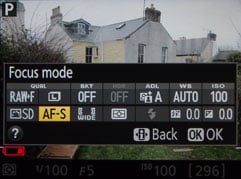 | 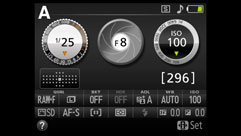 |
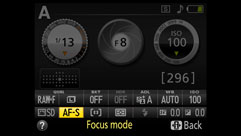 | 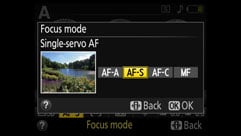 | 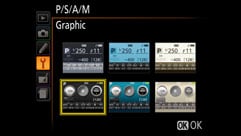 |
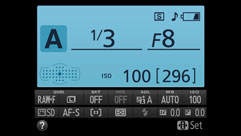 | 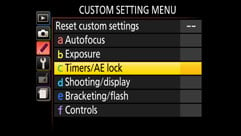 | 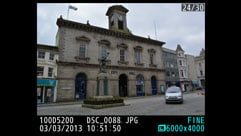 |
The ensure inking pad is used to sail the grid, and so a flick of the OK button takes you to the menu for changing settings, also navigated with the control aggrandize. This is an improvement connected the dog-leg layout of the D5100 with a long list of settings down the right side of the screen, but It's silence a two-click outgrowth (non including the control pad navigation) earlier you get to actually change something. It would each work more only, quickly and at once if, having ironed the i button to make changes you could employ the the command dial to change settings directly (You posterior do this, only only with the function assigned to the Fn button). That's how it works on the EOS T4i / 650D, plus you have the added bonus of a touch-projection screen, making the whole process of changing settings much quicker and more direct than along the Nikon D5200.
Just a partner off of other points worth noting where the D5200 improves on the handling operation of its predecessor. As I mentioned in the introduction, the finder grid overlay makes a receive re-appearance as execute the AF points, this is a major dispute to the EOS T4i / 650D which has no grid and for good etched AF points with a central LED that blinks when the AF is activated. The D5200's viewfinder is less cluttered with the AF area lit up connected activation – much more visible when needful and less obtrusive at past times.
The past improvement is in the Auto ISO curriculum. Though you can't directly set Motorcar ISO in PASM modes, enabling Auto ISO sensitivity control testament allow the D5200 to override the manually set ISO sensitivity if the situation demands IT. When this happens an indicator flashes both on the LCD screen and in the viewfinder to warn you. The maximum sensibility can be set, as can the stripped-down shutter speed at which the sensitivity leave be adjusted in P and M modes. By setting this latter option to auto the D5200 can adjust it according to the lens in use. E.g., if you're using a wide angle crystalline lens the shutter hurry will go much slower ahead the ISO is elevated than if you feature a telephoto fitted. If you ascertain the D5200 is organism too gingerly operating theater reckless with the auto minimum shutter speed you bum adjust it in either direction. This is a genuinely clever feature that allows you keep control of your ISO sensitivity setting patc at the same meter providing a safety net to ascertain you still get good shots in poor idle.
Nikon D5200 Wi-Fi
The D5200 is one of three Nikon DSLRs currently compatible with Nikon's WU-1a wireless mobile adapter; the other two are the D3200 and the D7100. The WU-1a provides a Wi-Fi link between the camera and a smartphone OR tablet and Nikon currently provides apps for Android and iOS devices. I tested the WU-1a with my iPhone 4S.
The arranger itself is tiny, but IT does mean the wave connected the left side of the camera body that protects the ports has to be left open while you're exploitation it. Its tiny proportions make it an tardily thing to lose, something Nikon's has distinctly considered as it provides a carry event and lead with which you potty attach IT to your camera welt.
The Wu dialect-1a plugs into the USB / A/V port and, providing you've got Wireless racy adapter set to on whol you need to do to set IT up is urge the WPS button on the side. Then you good to need to select the camera SSID in the Wi-Fi connection frame-up on your phone, launch the app and you're in business. It's the most unambiguous, perturb-free Wi-Fi setup I've encountered on whatsoever connected camera.
The iOS app is functional, though quite an limited and design clearly wasn't a priority for Nikon. The top menu consists of two options – Rent Photos and View photos. Blue-ribbon the former and photographic camera is straightaway switched to Live view with the display viewing what you'd normally see on the camera's LCD sort, but with a more pocket-size information video display. The camera's screen is blank and remains so while the WU-1a is plugged in and active, that means you can't switch to Dwell opinion connected the camera, or playback images, just you can change settings and access the menus.
At one time you've entered the shooting mode in the iOS app control of pretty much everything passes to your phone, but here I'm victimisation everything in its Sir Thomas More modified circumstance of focussing and emotional the shutter. The wireless far app provides Live view feeling focussing – you can tip anywhere on your phone covert and the D5200 responds immediately, adjusting the focus for the designated area. This is majuscule, and it's just a shame that this is the single agency in which the app extends the camera's functionality, in virtually every separate respect what you amaze is a very modified mode of operation.
With your iPhone in portrait orientation basic exposure settings are displayed below the Live view and if the camera was set to Political program mode before you entered shot mode you'll see the aperture and shutter quicken alter as you act upon the tv camera and the metering responds to the dynamic buoyant. But it's not realistic to use computer programme shift or exposure compensation to change the vulnerability.
Boost investigation discovered that once you're in shooting style with the app, none of the camera controls is functional. This is a pretty serious limitation given that the app itself doesn't provide any exposure or other controls on the far side touch focus and shutter release. This applies to all the shooting modes so, bizarrely, in manual style the exposure settings are unchangeable to whatever was set in front you entered inaccessible shot mode. To deepen them, you have to select camera from the app settings carte, which turns off live sentiment, convert the settings connected the camera, past select 'WMU' to turn Unfilmed view back on. In Aperture and Shutter priority modes, the auto factor testament adjust but once more, to change the manual of arms element (i.e. the shutter speed in Shutter priority mode) you have to hand control back to the camera via the app's setting menu, constitute the change then re-enter remote shooting fashion from the app.
And while the app has a two-second self-timer feature, you can't use the D5200's ten back self timekeeper, or either of the continuous shooting modes. As there's atomic number 102 way of holding drink down the shooting clitoris connected the app you get a fit of most trey frames and that's IT.
The second teetotum menu option on the app allows you to view images on the tv camera wit and download them to your sound. Thither's nobelium alternative to downsize images, the full-cherry-sized image file, be IT a JPEG OR Untreated file is dispatched to your call up and while this works reasonably quickly (it took antitrust under 20 seconds to transfer a double fine JPEG) you might want to call up carefully approximately how much time and capacity you've got before sending a whole card overfull.
In one case the images are on your earpiece you can then make what you like with them including posting to sharing sites, emailing them or some. One thing you in all probability North Korean won't lack to do is keep 24 megapixel images along your phone too long. For iPhone owners, one option is to synchronize them to Photo Stream from where you can retrieve them via Aperture or iPhoto. Merely this highlights one of the shortcomings of the WU-1a which is that IT needs a smartphone connection – you can't wirelessly transfer a folder of images to your Macbook or PC laptop. Allowing the WU-1a to connect to a wireless meshwork, or to act as an access point would make it information technology a lot more useful.
As information technology is, it's cool to be able to operate the camera remotely and great to be able to focussing by soupco and permit's non leave that the Canon EOS T4i / 640D doesn't have anything similar. Just the same, it's difficult not to be disappointed by the miss of control offered by the WU-1a and the iOS app, particularly in light of what Panasonic has achieved with the Lumix GH3. I didn't test the D5200 with the Mechanical man app from according to reports it provide a similar level of functionality to the iOS app.
Nikon D5200 Autofocus
The D5200 sees a major upgrade in its AF system from the 11-point TTL phase detecting system of its predecessor to a new 39-point organisation. This uses the unchanged Nikon Multi-CAM 4800DX autofocus sensor mental faculty with 39 focus points (including 9 cross-type), as the earlier higher end D7000. In AF terms, this places the D5200 right where you'd expect it, between the the D3200 with 11-point, and the D7100 and D300s with 51 point systems.
There are terzetto main AF modes: AF-S (Single Servo AF), AF-C (Continuous Servomechanical AF) and AF-A (an Automobile mode which selects between them conditional whether the matter is in motion). These are selected from the main information expose screen, where you'll likewise be offered a Extremity focusing option.
Like the D5100 before IT, there's four AF Area modes: Single Point, Auto Area, Propellent Area, and 3D Tracking (the latter exclusive available in AF-A and AF-C modes). In Single and Dynamic Area, you tooshie manually adjust the focusing point using the rocker control, with Dynamic Area too considering circumferent focus points if the subject moves. Due to the increased number of AF points Dynamic Area AF is available in three variants – 9-point, 21-point and 39-point. 9-point high-energy Area AF is recommended for subjects corresponding runners or race cards that be active predictable, 21-point for unpredictable movement such every bit football players and the full 39-points for ticklish to frame intelligent-self-propelled subjects like birds.
Like its predecessor, the D5200 exclusively relies on contrast-based AF in Survive View, with the choice of four modes: Normal Orbit, Wide Area, Face Priority and Subject Trailing. Also Inherited from the D5100 is the choice of AF-S (Single) or AF-F (Regular Control system) in Live View, where the latter attempts to continuously autofocus, plus in that location's also the option to concentre manually in Live view.
In practice the D5200's AF is a marked advance on the 11-pointedness system of its predecessor. The sole caveat is the supplied DX 18-55mm VR kit lens which as we've seen before is neither the quickest nor the quietest focuser in the range. If you demand snappier performance, or something quieter when recording movies, you'll need to rise to a better model.
Nikon D5200 Incessant shooting
The D5200 offers seven publish modes, Single frame, Continuous L, Continuous H, Self-timekeeper, Delayed remote (ML-3), Prompt-response far (ML-3), and Quiet shutter release, accessed via a fare displayed when the freeing mode button is pressed. The two remote options work with the optional IR controller.
With the release mode mark to Constant L, the D5200 shoots at 3fps and along Continuous H the range increases to 5fps – an betterment on the 4fps continuous mode of its predecessor. If you set the AF mode to continual the D5200 will focus between shots only the range slows by so much a degree you're fortunate setting S-AF, in which case the centerin is unadjustable on the first shot.
To put it to the test I fitted the D5200 with a fresh formatted 16GB Sandisk Extreme Pro SD batting order rated at 95MB/s. With the D5200 set to 200 ISO and 1/500 and Large Ok JPEG I fired hit a busted of exactly 100 frames before the camera stopped shooting. I timed the 100-frame burst at 19.8 seconds making a frame up rate fractionally over 5fps. Set to RAW the D5200 fired inactive 8 frames before slowing appreciably. The first eight frames took 1.4 seconds – 5.7fps after which it slowed to a fairly steady 3fps. After shooting the 100 JPEG burst I timed how long it took for the buffer to empty – a whopping 58 seconds, however, after only a second operating room two you throne shoot another 100 frame burst at the equivalent 5fps rate. Which begs the question, why does the D5200 take so long to nett the buffer if you choose non to take a subsequent burst.
Nikon D5200
Detector
The D5200 has a new 24.1 Megapixel sensor which produces images with uttermost pixel dimensions of 6000 x 4000. Though it shares the same resolution this isn't the same sensor as is in the D3200 which is an in-house Nikon design, merely a raw chip from Toshiba. American Samoa so much it'll be interesting to see how the still image and video quality compares.
Image data is saved as JPEG files at one of three compression ratios, fine (1:4) normal (1:8) and basic (1:16). Large Hunky-dory JPEGs are typically around 10-12Mb in size, RAW data can too cost recorded in .NEF files. The ISO sensitivity range runs from 100 to 25600 ISO and the shutter speed range is 30s to 1/4000 plus electric-light bulb.
To see how the quality of the Nikon D5200 measures-up in practice, have a look at my Nikon D5200 quality and Nikon D5200 noise results pages, browse my Nikon D5200 sample images, or skip to the chase and head straight for my finding of fact.
Pages: 1 2 3 4
Nikon D5200 review
Source: https://www.cameralabs.com/nikon_d5200/
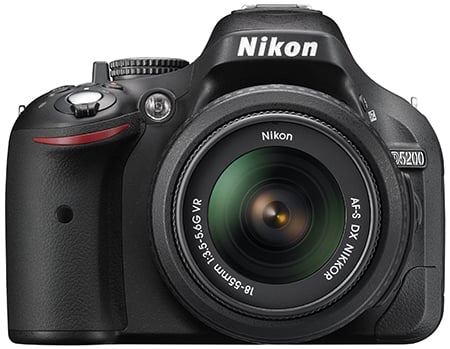
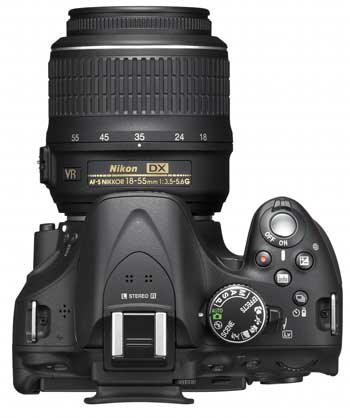
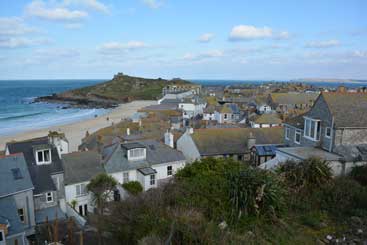
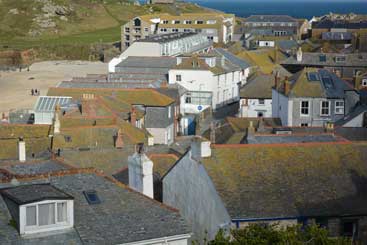
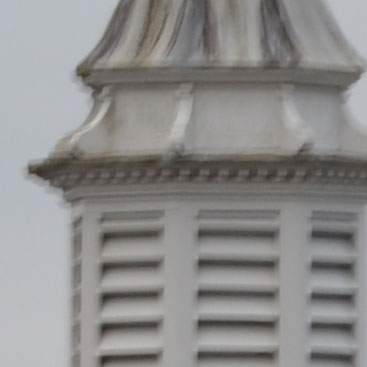
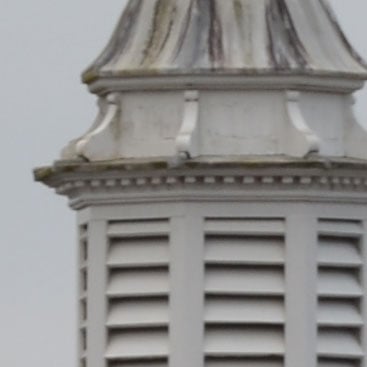
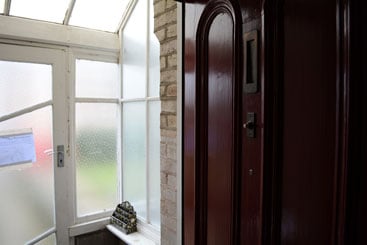
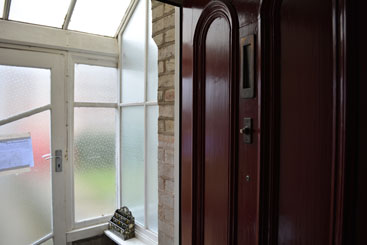
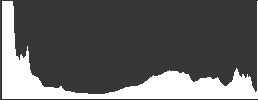

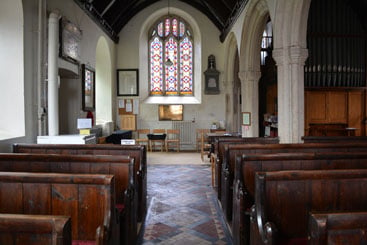
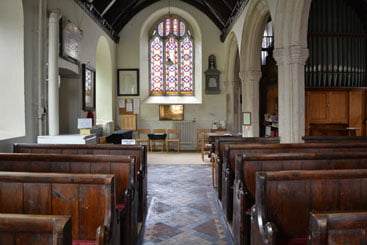
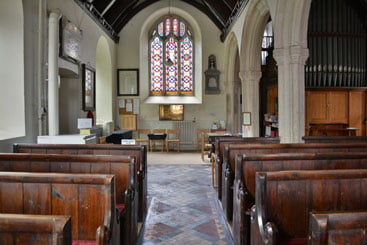
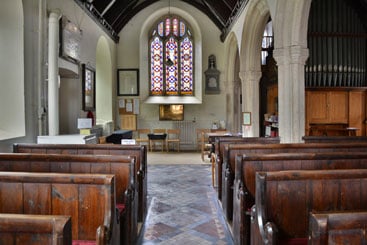
Posting Komentar untuk "Nikon D5200 review"